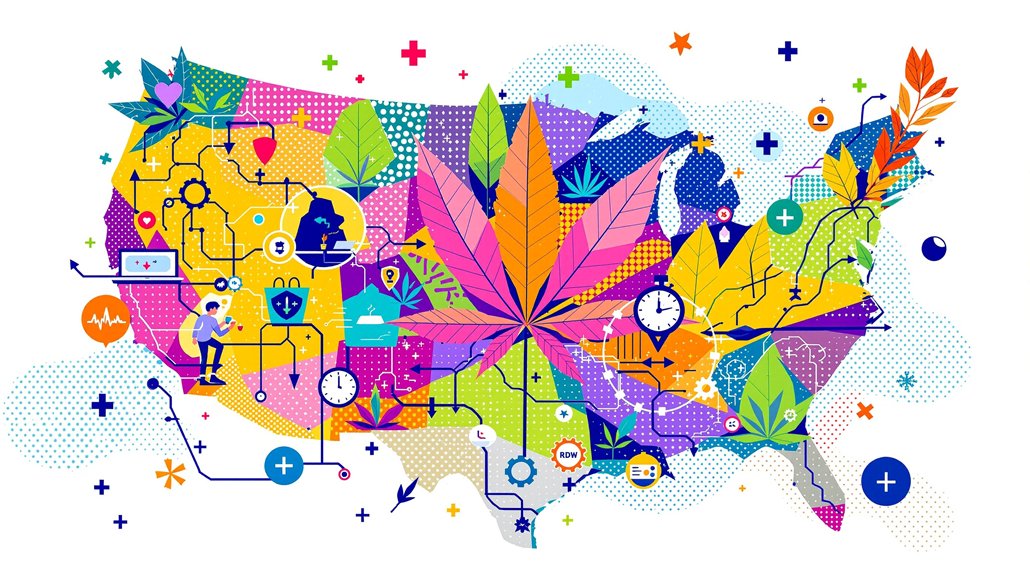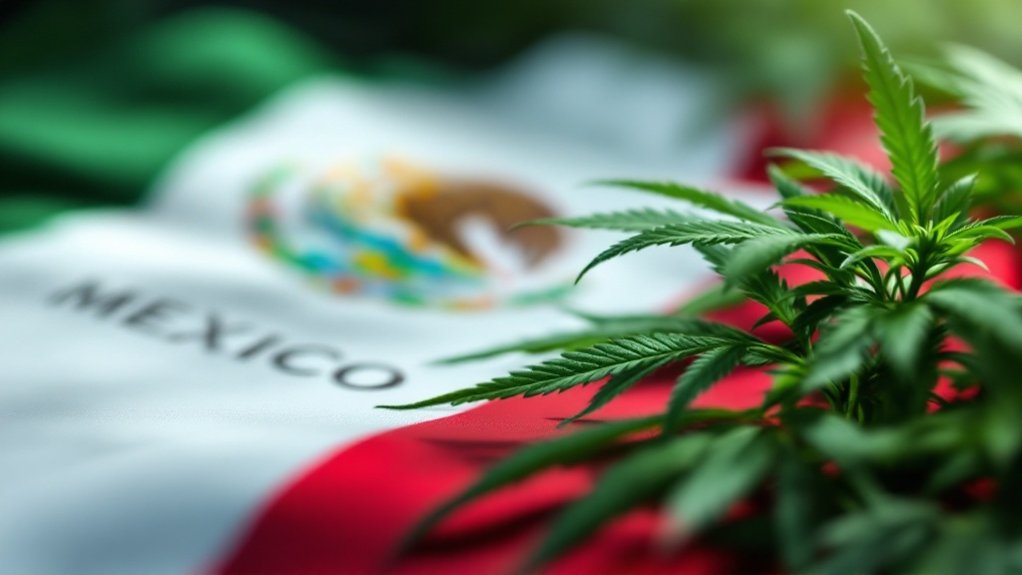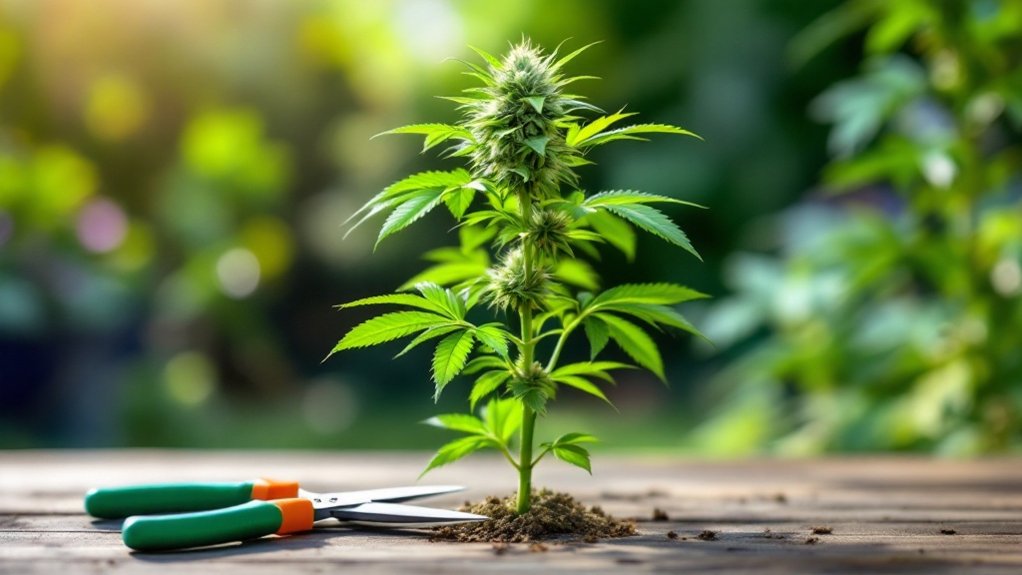Cannabis employers are scrapping traditional hiring playbooks as market demands reshape workforce strategies across the industry. Companies now deploy flexible staffing models that blend part-time workers with cross-trained full-time employees, responding to seasonal cultivation cycles and fluctuating retail traffic. Major operators like Curaleaf and Green Thumb Industries have embraced extensive benefits packages including health insurance and 401(k) plans to compete for talent in tight labor markets. This shift signals a broader transformation that’s redefining what cannabis careers actually look like.
Flexible Staffing Models Drive Industry Adaptation

Adaptability has emerged as the cornerstone of cannabis industry hiring practices, with companies embracing flexible staffing models to navigate an increasingly complex operational landscape. Rapid industry evolution creates unpredictable labor demands across cultivation, processing, and retail segments, forcing operators to abandon traditional hiring approaches.
Seasonal peaks during harvest periods and product launches drive temporary spikes in workforce needs. Smart companies now deploy part-time and temporary workers to scale operations efficiently, maintaining cost control while preventing costly overstaffing during slower periods.
Cross-trained teams add versatility, enabling staff to shift roles as demand fluctuates. Staffing agencies provide rapid access to pre-screened talent, reducing downtime during surges or unexpected vacancies. These agencies also help streamline the process by providing workers with specific licenses required by state regulations.
Temp-to-hire models allow thorough employee assessment before permanent commitments. Industry-specific platforms like Vangst and CannabizTeam connect employers with candidates who possess relevant cannabis experience and expertise. This strategic flexibility helps companies balance operational demands with financial discipline, a necessity in today’s maturing market.
Competitive Compensation Reshapes Cannabis Careers
Explosive growth in the U.S. cannabis market—projected to reach $45.35 billion in 2025 has transformed compensation strategies across the industry, turning what once resembled a grassroots movement into a full-scale talent war.
The sector now sustains 440,445 full-time equivalent jobs, with expectations to generate over 500,000 positions by 2025.
Price compression tells a different story. Retail prices plummeted 32% between Q3 2021 and Q2 2023, forcing companies to get creative with compensation packages.
Falling cannabis prices sparked a compensation revolution, pushing companies beyond basic pay toward comprehensive benefit packages.
Major operators increasingly offer health insurance, retirement plans, and wellness stipends, benefits that mirror tech and retail sectors rather than traditional agriculture. Master growers command between $70,000 and $120,000 annually, while experienced cultivation directors can earn upward of $140,000.
Millennials drive 46.2% of cannabis sales, pushing employers toward pay equity and transparency. Growth remains strongest in Midwestern markets like Michigan, Missouri, and Illinois, where expanding operations create the most job opportunities.
The result? Cannabis careers now rival established industries in both prestige and paychecks.
Regional Growth Patterns Create New Opportunities

While established markets like California and Colorado continue to dominate headlines, the real action in cannabis hiring is shifting to newly legal states where regulatory frameworks are sparking unprecedented job creation.
These emerging markets are driving the industry toward its projected 500,000 jobs by 2025, with the strongest growth occurring in recently legalized regions.
The numbers tell the story clearly. Annual state tax revenues now exceed $20 billion, outpacing alcohol in several jurisdictions and creating budget windfalls that fuel further expansion.
Recreational sales growth consistently outpaces medical in these newly legal territories, generating diverse employment opportunities from cultivation facilities to retail dispensaries. Millennials and Gen Z now represent the dominant consumer base, accounting for over 60% of cannabis purchases and reshaping workforce recruitment strategies.
Regional innovation is accelerating as states develop unique regulatory approaches, creating specialized roles that didn’t exist in pioneer markets. With growth rates reaching 16.9% CAGR in segments like edibles, businesses are ramping up hiring for product developers and compliance specialists. With online cannabis sales projected to increase by 300% by 2025, digital marketing specialists and e-commerce managers are becoming essential hires across all market segments.
Technology Integration Transforms Workforce Management
Cannabis businesses are rapidly embracing sophisticated workforce management platforms that address the industry’s unique regulatory complexities while streamlining traditional HR functions.
These cannabis-specific HRIS systems automate compliance alerts and track mandatory certifications across evolving local, state, and federal regulations. Gone are the days of drowning in paperwork – digital onboarding portals now handle electronic form signing, training material distribution, and credential documentation in one centralized location.
Time-tracking platforms with biometric verification prevent buddy punching while real-time dashboards provide visibility into labor metrics and overtime risks.
The game-changer? AI-driven analytics that reveal workforce trends and productivity patterns for smarter decision-making. Single-database systems eliminate data silos by unifying HR, payroll, benefits, and scheduling.
AI-powered workforce analytics and unified database systems are revolutionizing cannabis HR by breaking down data silos for strategic insights.
This integration reduces regulatory fines, accelerates new hire readiness, and transforms administrative chaos into streamlined operations. Modern platforms also provide self-service portals that empower employees to update personal information, access documents, and submit requests without burdening HR teams. Performance tracking tools enable continuous monitoring of employee skills development and training progress to ensure workforce competency standards are maintained.










